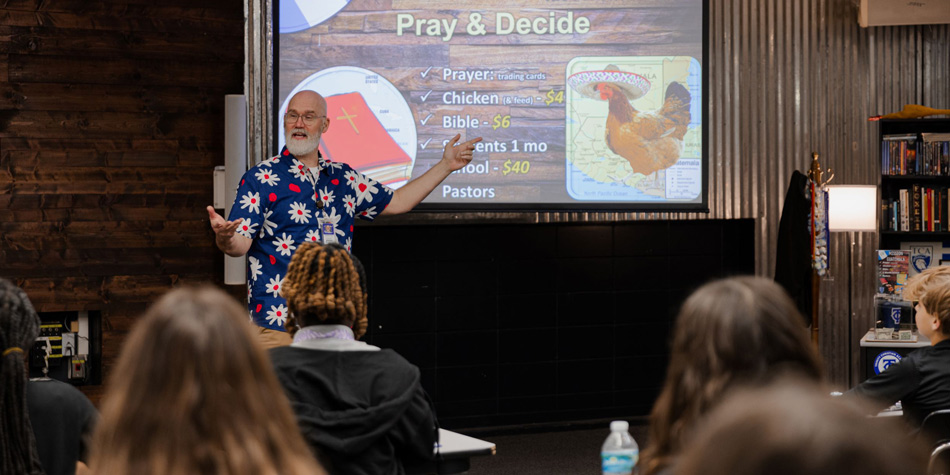Creating “Global Missions-Minded” Students
February 6, 2024
Do you ever wonder how you could help your students make a lasting impact outside of the classroom? If so, you might want to hear what David Welling, head of school at Trinity Christian Academy in Jacksonville, Florida, is up to.
Raised as a missionary kid in Sudan, Welling has a vision to connect students with missions in a way that goes beyond a one-time visit, an annual “Missions Week,” or any other short-term missions emphasis. He is passionate about creating opportunities for his students to invest long-term in mission efforts and to develop meaningful relationships along the way. He says this starts with schools learning to think “missionally and globally.”
“Thinking missionally is a long-term, a lifelong thing,” explained Welling. “The Great Commission is very much a long-term thing.”
To encourage long-term missional thinking at Trinity Christian Academy, Welling encourages a four-pronged “adopt” approach. If your school is “adopting” a particular mission to support, such as a people group, a missionary family, or even a local homeless shelter, Welling’s approach can help your students learn to think long-term about serving others.
For example, a school or class might adopt a people group in Ethiopia in conjunction with a missionary family serving that people group. An example of this vision of adopting for a long term may be applied to the students as they move up through your school.
- Exposure: K-2 As students start out in school, they learn about the people group and how to pray for the needs of people in another country.
- Being Purposeful: Grades 3-5 Upper elementary students will gain more knowledge about the people group’s language, culture, and location in the world. Students also start to develop relationships with the missionary family serving that people group. Students can correspond with the family or even make connections over video chat.
- Engaging: Middle School Though students will have grown and changed significantly by the time they reach middle school, they will still have the connection with the Ethiopian people group they adopted in kindergarten. Students can now engage at a deeper level, having a greater ability to comprehend a culture different than their own and an increased capacity to pray. School leaders and teachers will continue video chats and other forms of communication between the class and local missionaries.
- Supporting: High School By high school, in addition to prayer and communication, students will be encouraged to fund and plan a trip to the missionary family and the group that they have been learning about and supporting. The trip might center around a clean water project such as helping to provide a new well, or an economic venture such as providing sewing machines for small-business use.
Welling’s vision is not designed to fit just one project or school, but rather to guide students’ experiences so they learn to think long-term about missions in a service-learning and hands-on approach. Every school can customize its vision for building these experiences into the overall experience.
“My whole thing is just getting away from the box checking and making missions and global engagement something that is heartfelt, is meaningful, is relevant, and that is long-term,” said Welling.
Welling has been at Trinity Christian Academy for six years. This year, 7th grade students at Trinity have adopted a missionary family in Costa Rica and are learning about the culture and making connections with the family. Their practical support is going out in the form of chickens and Bibles! Welling is especially excited that the missionaries have just started a Christian school. He sees so much potential to support and encourage the family in their new endeavor—one Christian school to another.
As a missional mindset gains traction at Trinity, Welling is optimistic about its impact. “I think that’s going to create students with a broader worldview, with more meaningful opportunities to engage with people outside their own community and their own world,” he said.
As a missionary kid who lived in Sudan, went to school in Kenya, and has worked at schools in Ethiopia and Morocco as well as in the United States, Welling knows about getting outside of your own world. He understands the value of serving those outside of your immediate community, and he is equipping students to do just that.
If you are catching the vision for developing missionally minded students, here are a few suggestions for next steps:
- Talk to your pastor about a potential missionary family your school could adopt.
- Connect with a missions sending agency to connect with a missionary family, people group, or project.
- Learn about World Vision’s “Ignite” program, which is also designed to help students make lasting connections to Christian missions and people.
- Look at the attached Guidebook – Global Missions for Schools.


